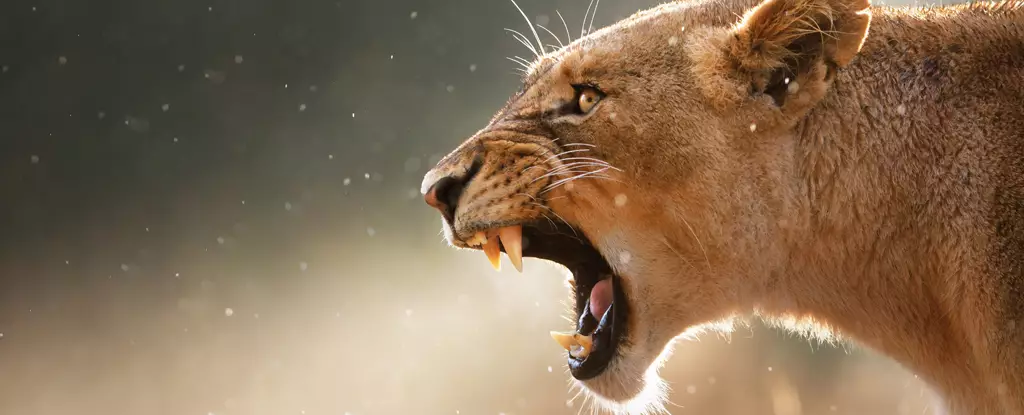The African savannah is a realm of survival, a constantly shifting balance where every creature plays its part in a complex ecosystem. Among these inhabitants, lions stand tall and formidable, epitomizing strength and ferocity. Yet, startling research sheds light on an unexpected reality: despite their might, these apex predators are not the most fearsome presence in the minds of other wildlife. It’s not their powerful roars or the spectacle of their group hunting strategies that instill fear. Instead, it’s the humans who roam the terrain, viewed as the true predators in the eyes of the animal kingdom.
Recent studies, particularly one conducted by researchers at Western University, reveal a startling statistic—95% of the wildlife observed in the Greater Kruger National Park demonstrated a significantly higher level of fear in response to human sounds compared to those evoked by lions. This fear stems not just from direct encounters with humans but from a deep-seated recognition that we pose an ongoing threat to their existence. Conservation biologist Michael Clinchy emphasized in 2023, “The fear of humans is ingrained and pervasive,” highlighting how wildlife has been conditioned to regard humans as the ultimate danger, far beyond any other predator.
The research included carefully controlled experiments where animals were exposed to various vocalizations, from those of lions and gunshots to human conversations in local languages. Findings indicated that when these animals heard human speech, they were twice as likely to flee compared to when they were exposed to the sounds made by lions hunting. This revelation challenges conventional notions of fear dynamics within the animal kingdom, illustrating that the predatory relationship humans maintain over wildlife transcends physical threats.
In a striking observation, the mammal species surveyed included not only feared predators like leopards and hyenas but also herbivores such as elephants and giraffes, beings that at times pose their own risks. Despite their own formidable attributes, these species exhibited an overwhelming tendency to retreat at the mere sound of human conversing or hunting. A noteworthy incident involved an elephant charging at the researchers’ setup after being disturbed by lion vocalizations, demonstrating the animals’ acute sensitivity and protective instincts for their community.
The behavioral analysis conducted in response to the sounds highlighted a critical aspect of wildlife survival—an ingrained instinct to avoid potential dangers. As researchers navigated the dynamics of animal responses, it became evident that human presence, both on an ecological and evolutionary level, instills a sense of threat that resonates deeply within the psyche of savannah inhabitants.
The implications of this ongoing fear are grave. With the expansion of human habitats and activities, animal populations find themselves facing an ever-present menace. The constant state of alert driven by human noise has the potential to affect reproduction and resource utilization among prey species. Notably, as revealed in previous studies, prolonged exposure to stress-inducing stimuli can lead to long-term declines in populations, particularly for species already under pressure from habitat loss and poaching.
Conservationists must grapple with this knowledge, realizing that managing human interactions with wildlife is vital for fostering healthy ecosystems. The research proposes potentially innovative uses of human vocalizations for conservation efforts, such as using recorded human sounds to deter endangered species from poaching areas. This approach, aiming to exploit the animals’ fears, could become an integral strategy in the fight to protect vulnerable wildlife from humans—the very creatures they instinctively fear the most.
As stewards of the planet, humans have an undeniable impact on wildlife and ecosystems. The results of the studies discussed here call for introspection regarding our role within these environments. Reconciling our existence in the savannah means acknowledging the realities of our influence—not merely through hunting and land development but in the psychological landscape we impose on other species. A deeper understanding of these dynamics may pave the way for more effective conservation strategies that resonate not only with human interests but also honor the intricate lives of the animals we share the earth with. By recognizing ourselves as both the architects and disruptors of the environment, we hold the potential to transform the future of Africa’s savannah wildlife—from fearful inhabitants to fellow cohabitants seeking harmony in a shared existence.

Leave a Reply